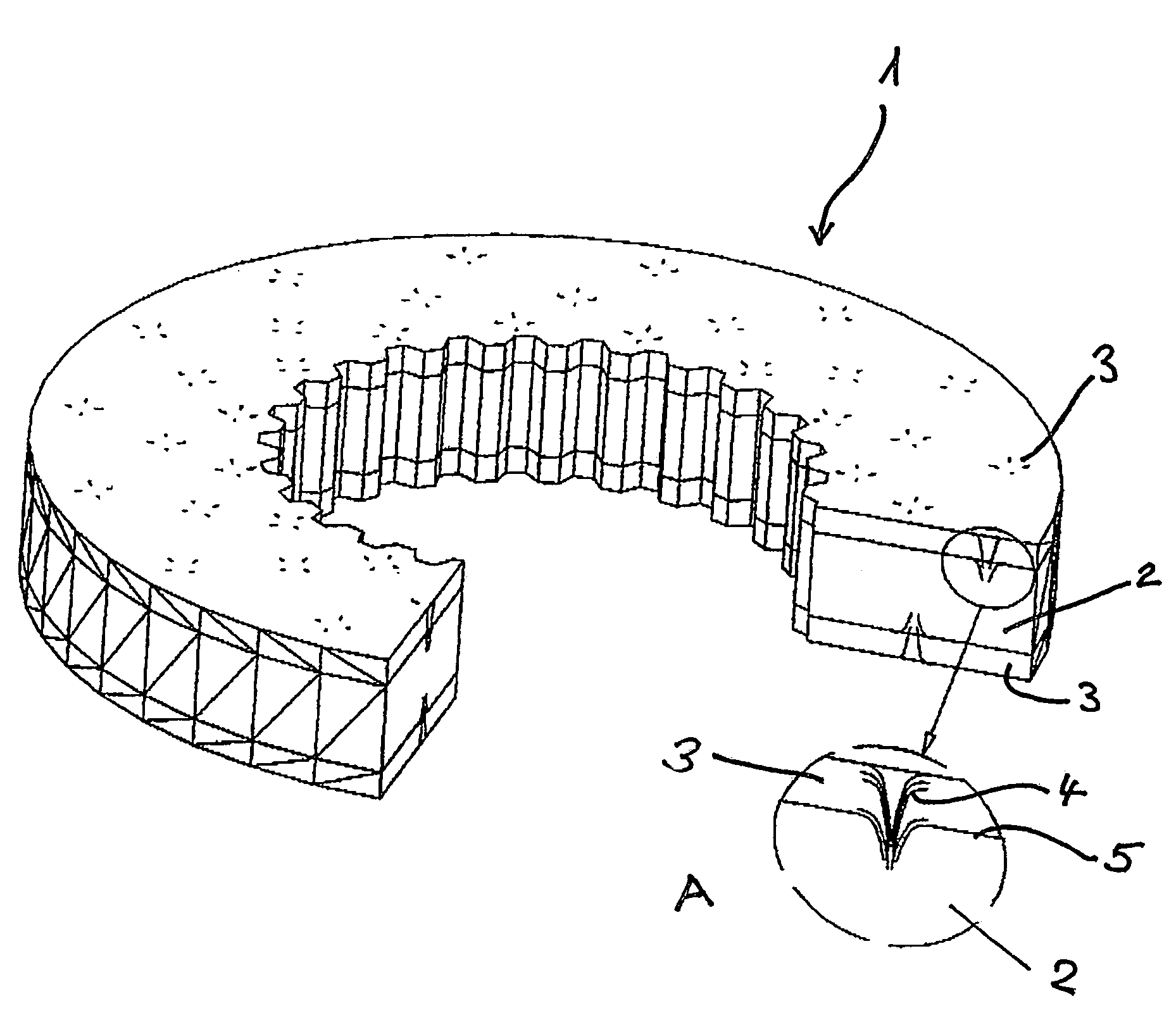One-piece friction body with a support and a friction pad disposed thereon and method of its manufacture
a friction body and support technology, applied in the direction of friction linings, brake types, other chemical processes, etc., can solve the problems of friction pads not possessing the heat resistance required, friction pads may bulge between the “rivets", laborious and expensive riveting, etc., to achieve the effect of enhancing the strength properties of the friction body and increasing shear strength
- Summary
- Abstract
- Description
- Claims
- Application Information
AI Technical Summary
Benefits of technology
Problems solved by technology
Method used
Image
Examples
Embodiment Construction
[0015]According to a preferred embodiment of this friction body, the friction materials of the at least one friction pad and the support are joined to one another integrally and positive-locking by needling of the reinforcing fibers contained in the respective friction materials, prior to curing of the friction materials under heat and pressure in a pressing mold corresponding to the friction body to be produced, from the outer surfaces of the friction body.
[0016]As shown in the drawing, the one-piece friction body (1) includes a support (2) and two friction pads (3) disposed thereon. As can be seen from enlarged part A of the drawing, the friction pad (3) is joined to the support (2) integrally and positive-locking by means of the reinforcing fibers (4) penetrating the boundary layer (5) between the support (2) and the friction pad (3).
[0017]As a result of the needling according to the invention of the friction materials for the support and the at least one friction pad disposed th...
PUM
 Login to View More
Login to View More Abstract
Description
Claims
Application Information
 Login to View More
Login to View More - R&D
- Intellectual Property
- Life Sciences
- Materials
- Tech Scout
- Unparalleled Data Quality
- Higher Quality Content
- 60% Fewer Hallucinations
Browse by: Latest US Patents, China's latest patents, Technical Efficacy Thesaurus, Application Domain, Technology Topic, Popular Technical Reports.
© 2025 PatSnap. All rights reserved.Legal|Privacy policy|Modern Slavery Act Transparency Statement|Sitemap|About US| Contact US: help@patsnap.com


